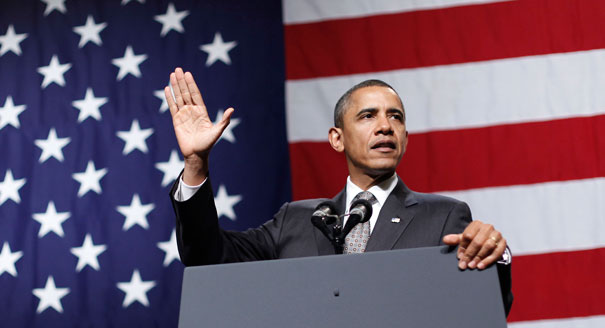Can we turn anywhere in the past for instruction about refugee and immigrant policy?
No, say the undergraduates at Princeton University:
Trump’s vision for the United States is perniciously fascist — incorporating elements of racism, xenophobia, jingoism, totalitarianism, and misogyny. Worst of all, Trump’s vision is indefinite: His actions have no bounds, and it is unclear when this nation will heal from his actions.
But this is not a departure from Americanism. There is nothing specifically un-American about Trump’s executive orders or rhetoric. The American Nightmare is an American Reality. Only when we realize that “living up to American values” is to sanction Trump may we wake up from this horrid dream.
Immigrant exclusion based on race, religion, or national origin is an American pastime. The Alien and Sedition Acts, arguably the first discriminating immigration act, were signed into law in 1798. Following this was the 1882 Chinese Exclusion Act; in response to popular racist and xenophobic anti-Chinese sentiment, the act “required the few nonlaborers who sought entry to obtain certification from the Chinese government that they were qualified to immigrate.” The act was extended into the 20th Century with the Geary Act, and its effects were not effectively reversed until the Immigration and Nationality Act of 1965.
The Chinese Exclusion Act is only one of many governmental measures to marginalize those deemed a “threat” to white civilization. Notably, the United States is guilty of genocide against Indigenous tribes. The Trail of Tears, perhaps the most infamous atrocity committed against an Indigenous tribe, resulted from Andrew Jackson’s abuse of presidential power to seize Native lands and force thousands into what is now Oklahoma. More than 4,000 died on the journey, with hundreds of others dying upon arrival. Trump’s executive orders in support of Keystone XL and the Dakota Access Pipeline is a continuation of the United States’ regnant disregard for indigenous peoples, not an anomaly.
Cold War policy isn’t much help either:
There was another way to become a refugee, an immigrant, and eventually a U.S. citizen. According to immigration law, if a migrant was on American soil, even if one had entered illegally, one could claim asylum, arguing that the applicant had a “well founded fear” of persecution if returned home. Only two thousand or so persons won asylum annually in the 1970s. For example, the government denied asylum to most of the Haitian boat people during the 1970s and deported them. After the 1980 refugee act incorporated the new UN definition of refugee status in place of the anticommunist one, and when the civil wars in Central America escalated, the number applying for asylum skyrocketed. More than 140,000 applied in 1995, for example, and by the end of the 1990s the backlog reached several hundred thousand. Haitians came by boat, but tens of thousands of Central Americans illegally crossed the border separating the United States and Mexico. The State Department and the INS insisted they were mostly illegal immigrants who should be deported. INS officials in Florida did modify policy slightly toward Nicaraguans. An official said that he could not deny asylum to Nicaraguans when the United States insisted that the government of that country was undemocratic and that the CIA-backed contras were trying to overthrow it. Nicaraguans still had difficulty in winning asylum status, but their approval rate was more than double that of their neighbors. In 1989, for example, 5,092 Nicaraguans won asylum, compared with 102 Guatemalans and 443 Salvadorans.
Friends of these contestants for asylum insisted that a double standard was being applied: Cubans merely had to get to the United States, but Central Americans had to win their claims on an individual basis. Many undocumented immigrant Salvadorans, Guatemalans, Hondurans, Haitians, and Nicaraguans did adjust their status due to an amnesty for undocumented immigrants passed in 1986. As noted, the law covered those in the United States before 1982, but for others fleeing violence in Central America after that date individual asylum was required, which was even more difficult to demonstrate when the civil wars in Central America ended in the early 1990s. Fewer than 10 percent of Salvadorans, Guatemalans, and Hondurans were granted asylum in 1999—up slightly from the rate of the 1980s but less than half of the general approval rate. Those who came after the IRCA amnesty were left in limbo, although minor modifications in immigration policy did permit some to remain. Moreover, once these Central Americans won asylum, they were eligible to adjust their status to that of regular immigrants and could then use the family preference system to sponsor their relatives. For example, in 1996 Haitian immigrants numbered 18,386, with 8,952 of these under the family preference system and another 4,815 coming as immediate family members of U.S. citizens who were exempt from the quotas. Comparable figures for Salvadorans were 17,903; 8,959; and 5,519. Data for Hondurans and Guatemalans were similar. The United States did permit Salvadorans and Hondurans the right to stay temporarily in the United States when earthquakes and hurricanes struck in the 1990s. These temporary stays, called temporary protected status (TPS), were not asylum; when TPS ended, the undocumented aliens were expected to go home.
But who cares about history? I know some evangelical historians who care but for some reason their historical perspective means moral disapproval (with a dose of self-approval).


